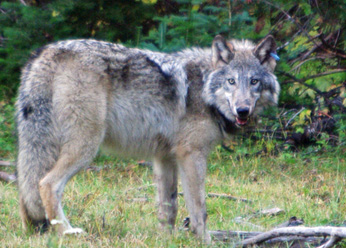
The gray wolf (Canis lupus) is listed as endangered under the California Endangered Species Act and the federal Endangered Species Act in California. This native species was likely extirpated from California in the 1920s. Wolves have returned to California on their own by individuals dispersing from source populations in other states. People who observe wolves or evidence of wolf activity (e.g., scat, tracks, howls) are encouraged to report it. This information can be a valuable tool for monitoring potential new packs or dispersal.
Potential conflict with wolves may occur when wolves interact with livestock. The proactive use of nonlethal deterrents is critical. Since 2017, various nonlethal deterrent tools have been successfully deployed at many properties in California such as range riders, turbo fladry, radio-activated guard devices, and foxlights. CDFW works to reduce the impacts of wolf presence on livestock in partnership with livestock producers, agency partners, and communities in known wolf territory.
Prevent Potential Conflicts
Wolves rarely pose a direct threat to human safety and generally avoid human presence. It is unlawful to “take” a wolf in California. This may include to harass, harm, pursue, hunt, shoot, wound, kill, trap, capture, or collect or to attempt to engage in any such conduct.